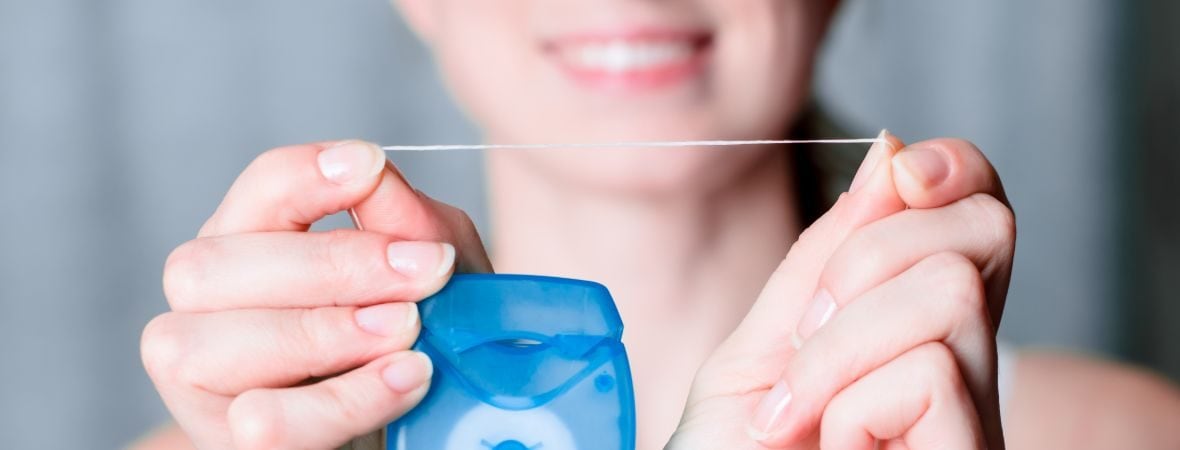Dr. Kitagawa of Pleasanton’s Gateway Dental Care sees the result of improper flossing all too often and understands how important it is that every patient knows how to floss properly. By executing the proper technique for dental flossing, you can drastically improve your gum and oral health – and it’s an easy and cost-effective solution that can be done anywhere!
Types Of Floss And Their Benefits
There are a few options for flossing, depending on your teeth and individual needs. The four common choices are:
 • Waxed
• Waxed
• Unwaxed
• Spongy floss
• Dental tape
The wax coating on waxed floss makes it resistant to fraying and breaking. Unwaxed floss is best for teeth that are close together and form tight spaces; this floss is more likely to fray. Spongy floss is made of stretchy fibers, and fits easily around braces or bridges. Dental tape is broader and flatter than standard floss. It cleans more effectively for teeth with average spacing.
How To Floss Properly
It doesn’t matter if you floss from the back to front or top to bottom – all that matters is that your technique is correct. The American Dental Hygienists’ Association says this approach to flossing will ensure positive results:
1. Using approximately a foot and a half of floss, wind it around both middle fingers to create tension. With thethumb and index finger of both hands, pinch the floss leaving 1 to 2 inches of space in between.
2. Using your thumbs to guide the floss, work it between the teeth.
3. Gently glide the floss using a rubbing or sawing motion; be careful not to jerk the floss upwards and cause damage to your gums. Work the floss along the sides and contours of the teeth.
4. Hold the floss firmly against the tooth and slide it up and down against the tooth making sure to get under the gum line. Use a clean section of floss for every tooth.
5. Lastly, don’t forget those back molars. The majority of tooth decay and gum disease appears among the back teeth.
Tips For Flossing
Some people have difficulty accessing their teeth for proper flossing, but there are tools available for these special circumstances. Ask your dentist about the many options available to you. Disposable Y-shaped flossing devices not only help those with small mouths (such as a child’s), but also those with limited dexterity. Pointed rubber tips and wooden or plastic pics are two other available flossing aids. A child will need your help to floss until he or she is 11 years old, and if a child has two teeth that touch, flossing is necessary to avoid decay.
A Healthy Smile Starts At Home
Gateway Dental Care encourages you to start a practice of proper flossing to avoid the pain and expense of tooth decay and gum disease. If you’d like further assistance with your oral health, we are happy to schedule an appointment. Call Gateway Dental Care today.




